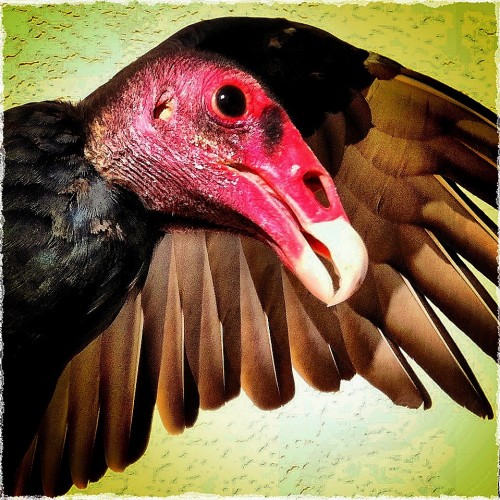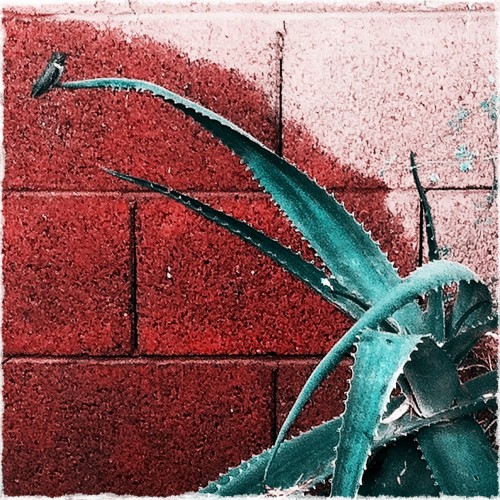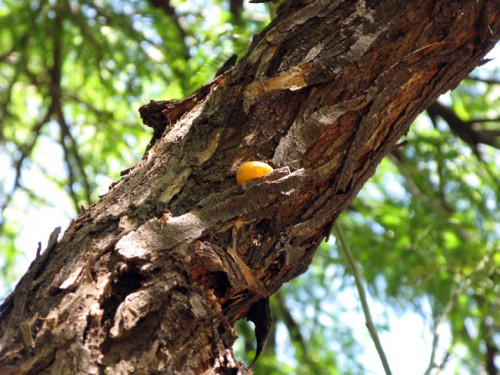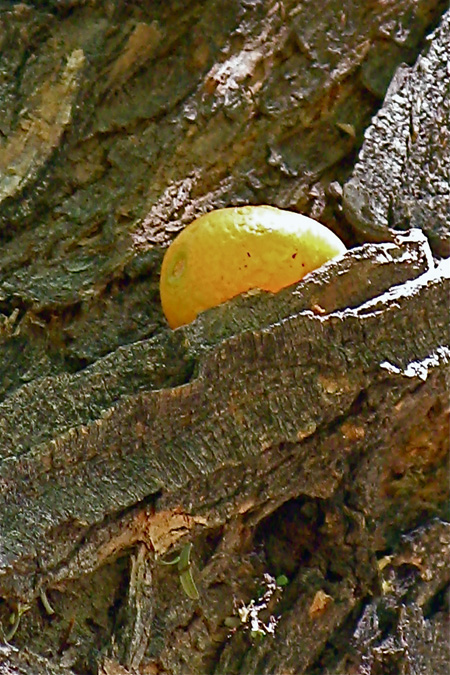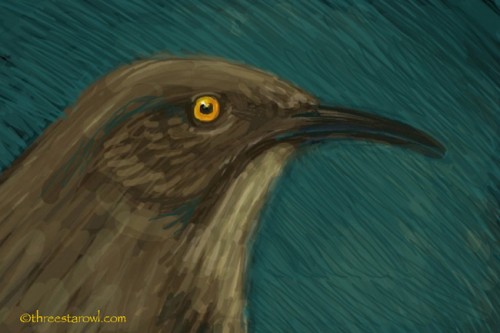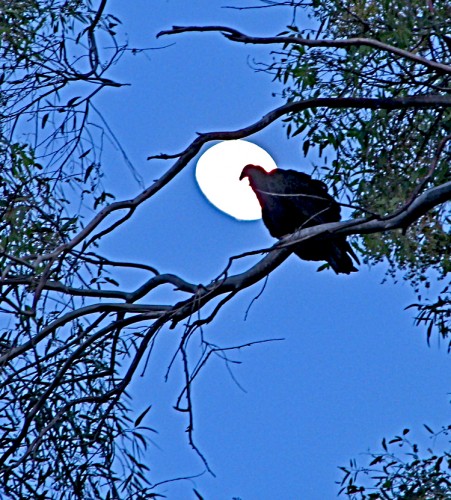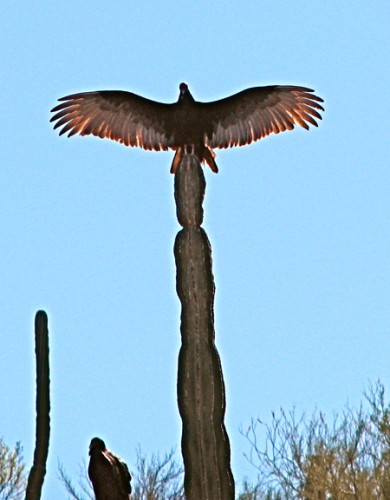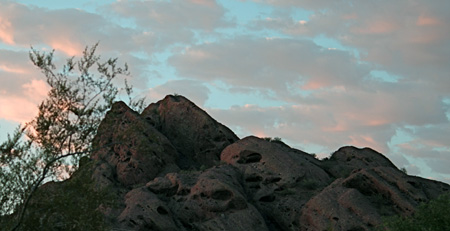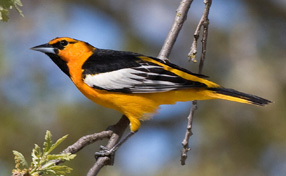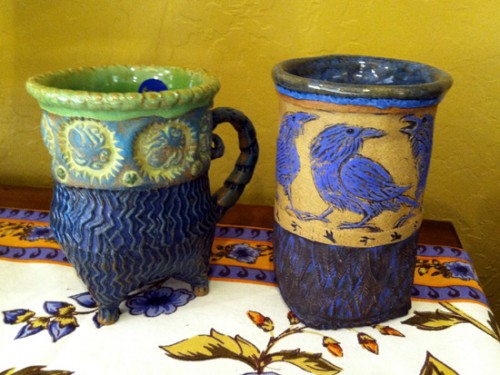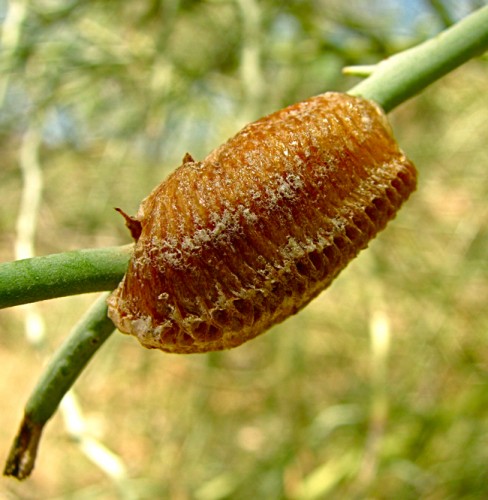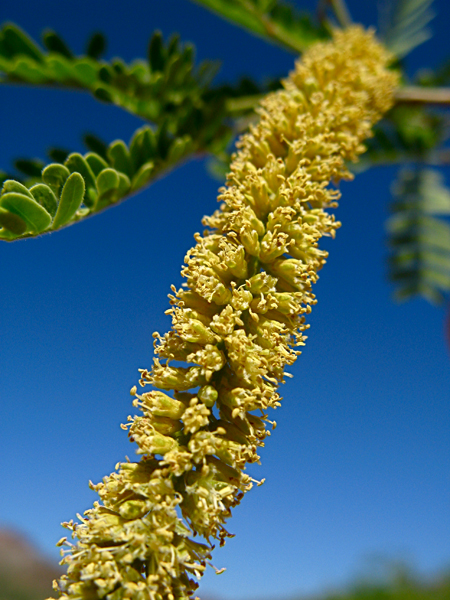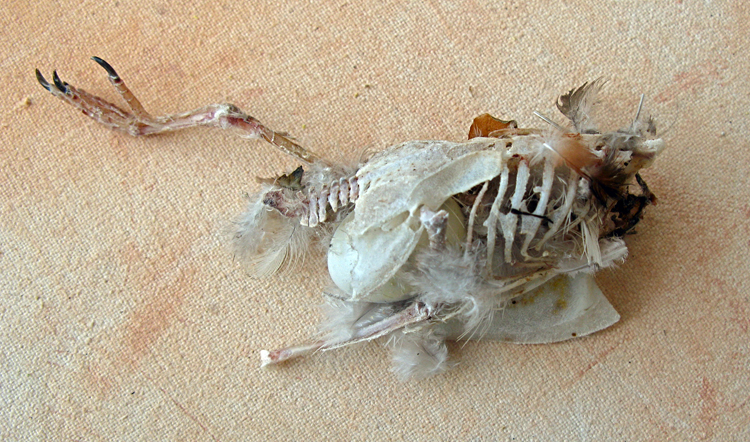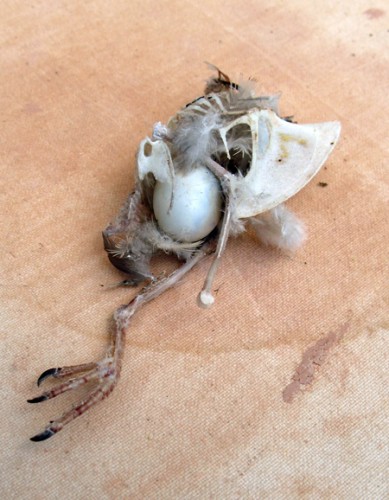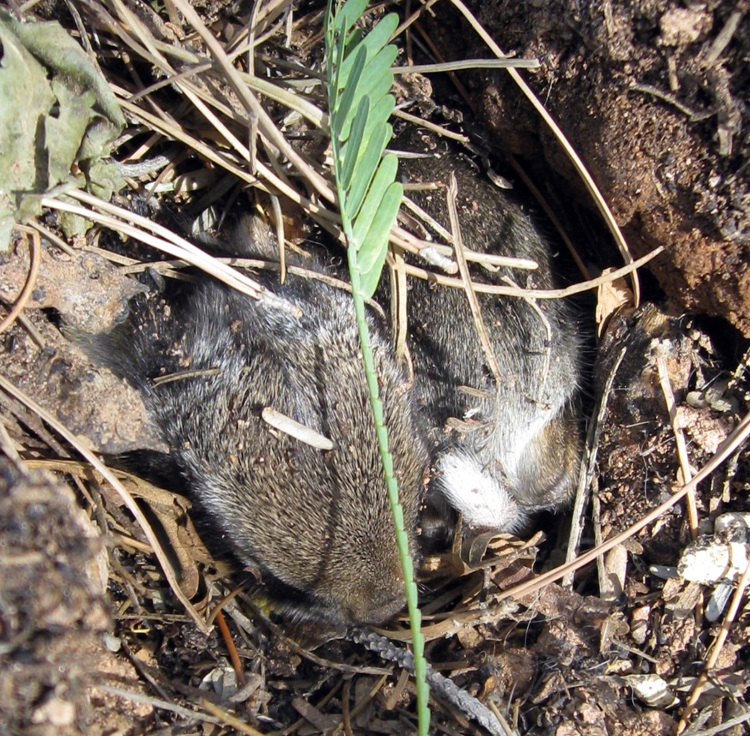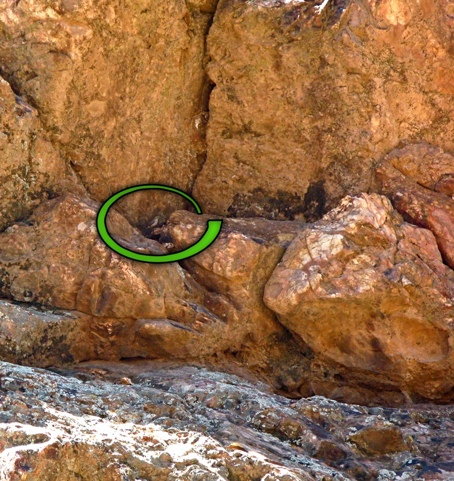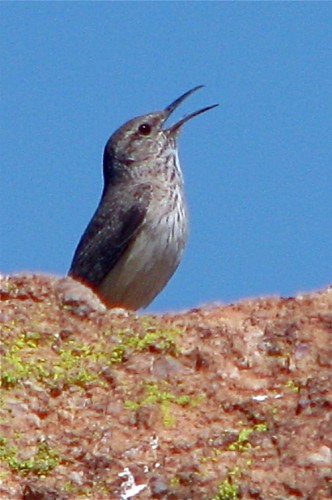This morning my foraging strategy was to cook oat bran, spangle it with almonds, and sweeten it a little with agave nectar. This left the sink full of dishes. Someone else’s foraging strategy — a fox? a coyote? — was to dig out pocket mice burrows, hoping for some warm, moist, furry, squeaking protein. This left loose dirt and awkward footing under the lines when I went to hang out the wet laundry.
Another foraging strategy was to hit the hummingbird feeders as soon as the sun was up. Hummers and woodpeckers — both Gila and Gilded Flicker — are the usual habitués, but since around the 20th of May Hooded Orioles (Icterus cucullatus) have also been sipping nectar at the feeders. They may have been in the neighborhood from time immemorial, but this is the first breeding season we’ve been aware of them in our yard, other 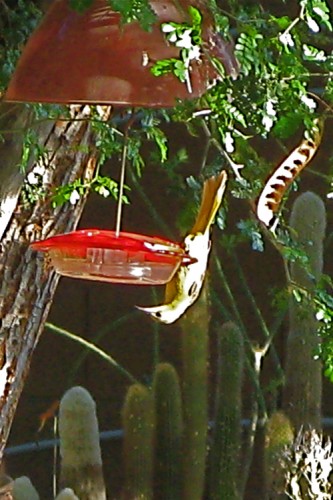 than as infrequently seen migrants. So, I’m excited. So excited that I’ve done two things: one, put up a purpose-made oriole feeder (like the hummer feeders we use, but bigger, oriole-sized, and orange), and two, inflict you with the following two barely adequate photos,
than as infrequently seen migrants. So, I’m excited. So excited that I’ve done two things: one, put up a purpose-made oriole feeder (like the hummer feeders we use, but bigger, oriole-sized, and orange), and two, inflict you with the following two barely adequate photos,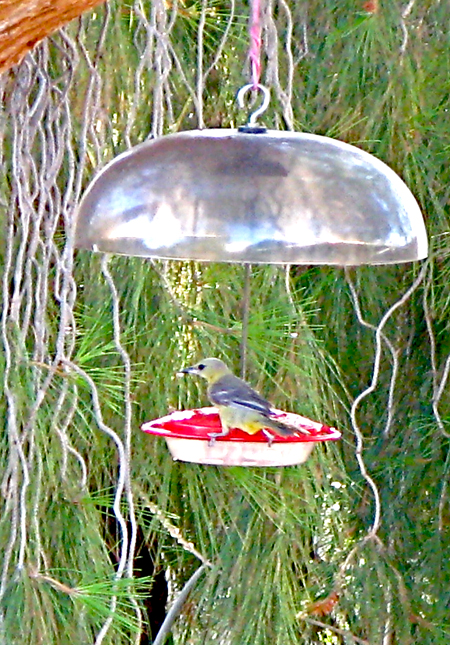 from my digital point-and-shoot.
from my digital point-and-shoot.
Hooded orioles (Photos A.Shock) >>
Yes, these are not great pictures, but as I say, I’m excited to be infested with orioles, and they’re the best pictures I’ve managed so far. So here they are. The birds are both shy and busy — they tend to go from one feeder to the other (these are hummingbird feeders in the photos) after less than 10 seconds on each one, and so are a tough target.
I’ve only seen a male at our feeder one time, when three birds arrived all at once (perhaps a family?). Unlike the subtle gray and pale-yellow females, the males are what we think of as oriole-y: a blazing golden yellow, with 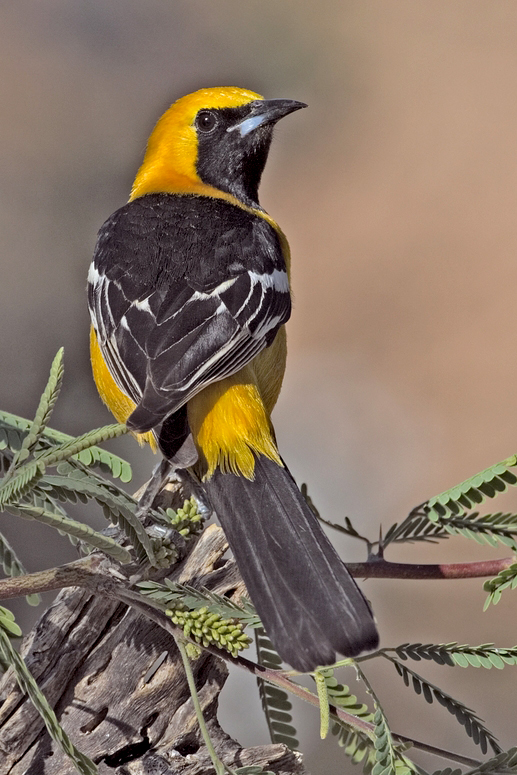 black wings and tail, white wing bars, and a black mask and bib.
black wings and tail, white wing bars, and a black mask and bib.
<< In this photo (by www.naturespicsonline.com) you can see a male on a mesquite. Hooded Orioles love to build their woven, pendulous nests high in palms and other trees, so high and inaccessible (to humans) that most biologists tend to look up at from the ground and proclaim “Yup, that’s a hooded oriole nest!”: for a not un-common bird, very little info exists on their nesting habits, or any of their habits, actually. (Read more about Hooded oriole’s natural history, listen to sounds, see more images at Cornell Lab’s All About Birds here). If you think of these orioles as I do, as golden birds with black parts, “hooded” makes less sense than “masked”. But if you think of them as black birds — and orioles are in a taxonomic sense Blackbirds, or Icterids, related to blackbirds, bobolinks, meadowlarks, caciques, and grackles, to name a few — if you think of them as black birds with golden bits, including a golden hood, then their name makes more sense. Check out the photo of the male again, with new eyes.
Back to foraging strategy: orioles eat insects, nectar and fruit. So, like hummers, they use the nectar ports on feeders, but as in the photo on the right above) “our” female/s seem to prefer hanging upside down to drink the sugary drips left by the swinging, sloppy woodpeckers. At this time of year, when the hummer feeders are busy with the new crop of young birds, and adults feeding themselves and nestlings, this can lead to a back-up of scolding hummingbirds who usually approach to drink only after the larger birds are done.
Orioles also eat fruit, and I had some past-their-prime oranges from our tree that I halved and impaled on a twig above the feeder — the orioles and woodpeckers cleaned them out, leaving only the skin with the interior membranes perfectly intact. Right now, there’s a watermelon on the kitchen counter waiting to be cut up whose sweet rind I intend to share. BTW, if you want to put out a nectar feeder for orioles, oriole nectar is 6-to-one parts water to sugar (hummer nectar is sweeter, at 4-to-one water to sugar). As with hummer food, bring water to boil, add sugar and stir until liquid is clear, bring back to a brief boil, let cool with a lid on, and fill feeders. Even if you don’t have orioles, woodpeckers will drink this mixture, too. And it may take some of the congestion off your hummer feeders.
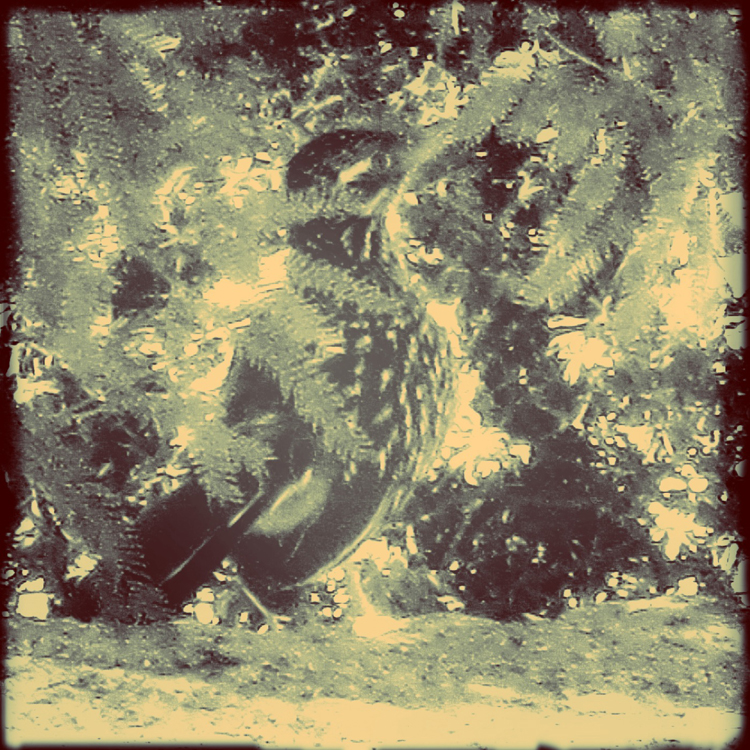 Yes, I realize that this is a very easy Spot the Bird. Although it was hiding among the lower branches of a mesquite, the bird is very easy to spot, here in the photo. But, driving past, not so easy. And it doesn’t think it’s easy to spot. The bird, a Greater Roadrunner, thinks it is well hidden, lurking like light leaking through leaves, looking for lizards.
Yes, I realize that this is a very easy Spot the Bird. Although it was hiding among the lower branches of a mesquite, the bird is very easy to spot, here in the photo. But, driving past, not so easy. And it doesn’t think it’s easy to spot. The bird, a Greater Roadrunner, thinks it is well hidden, lurking like light leaking through leaves, looking for lizards.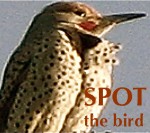 where it’s been around recently, causing me to hope it’s taken up residence. Go ahead, click to enlarge. It’s even easier to spot.
where it’s been around recently, causing me to hope it’s taken up residence. Go ahead, click to enlarge. It’s even easier to spot.
